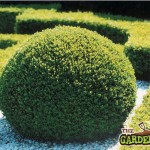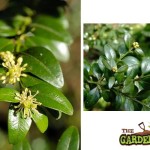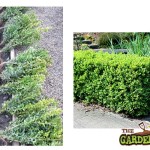Buxus Sempervirens
Common Names: Box, Box Wood, Box hedge, Box Hedging
Box Shape & Size:
Final Height: 150cm
Final Spread: 200cm
Type: Compact Bush / Neat Hedging
Habit: Spherical / Compact
SEE PICTURES OF BOX & BOX HEDGING :
- Box Ball
- Box Flower and Leaf
- Box Hedging
Box Features
Foliage: fine, dense & evergreen foliage
Colour: Deep Green, sometimes with cream margins
Shape: Ovate
Flower: Insignificant
Colour: Cream
Time: Summer
Box Location
Uses: Often grown for its formal qualities, Topiary & low Box Hedging & Parterres
Aspect: Full Sun / Partial Shade
Soil: Well Drained / Light & Clay Soils
pH: Acid or Alkaline
Hardiness: Fully Hardy
Companion plants: Herbs, Bold Foliage, Ferns, white foliage, roses
Box Plant Information
Box hedging and Buxus sempervirens is one of the most sought after plants. Its unique growing habit of fine dense leaves and hardy evergreen resilience make this a plant worthy of any garden.
Buxus is grown and trained by twice yearly cuts – this keeps the plants from becoming too large and allows gardeners to train and shape their plants to any range of shapes. This known as topiary and Buxus, Yew & privet are all suitable for this type of pruning and training.
While training Buxus to grow as Spheres and cones is popular the most common use for box is as a low formal hedge. If you want to create a low box hedge we recommend that you buy your plants as bare roots in autumn. Plant 5 plants per metre and trim every year to ensure and neat and informal look
Unfortunately, of late Buxus has become somewhat endangered by Box Blight which is a fungus that spreads from plant to plant killing it. At this point there is little in the way of a control for Box Blight other than Signum however this is not available to domestic users


